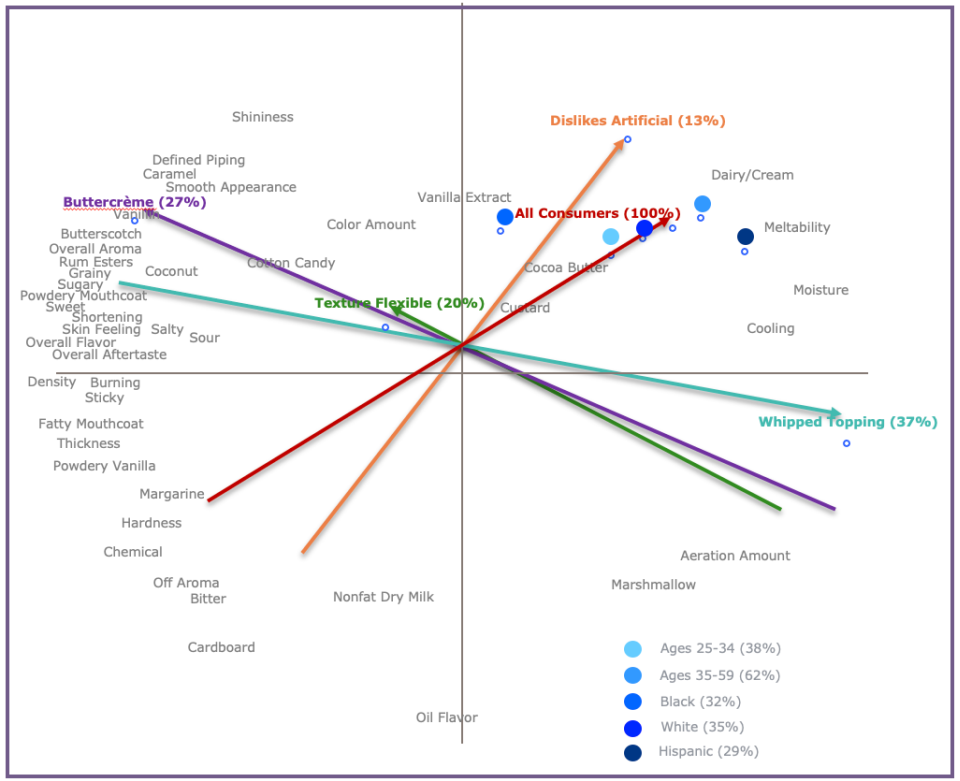Sensory Drivers of Liking
 When it comes to food, consumers are pretty straightforward in their willingness and abilitiy to state whether they like or dislike a particular product. However when it comes to explaining the details of why, their articulation can sometimes falter. Too sweet? Too bitter? Too soft? Too crunchy? Qualitatively, some conclusions can be drawn. In this case I was looking to develop a more objective, quantitative model that could be used to definitively benchmark competitive products for the purpose of driving more effective product R&D.
When it comes to food, consumers are pretty straightforward in their willingness and abilitiy to state whether they like or dislike a particular product. However when it comes to explaining the details of why, their articulation can sometimes falter. Too sweet? Too bitter? Too soft? Too crunchy? Qualitatively, some conclusions can be drawn. In this case I was looking to develop a more objective, quantitative model that could be used to definitively benchmark competitive products for the purpose of driving more effective product R&D.
Discriminatory panels are made up of groups of professional tastors who are experts at distinguishing and measuring flavors in products. Linking the results of these discriminatory panels together with basic consumer preference data sets via advanced modeling techniques allows for a greater scientific exploration into what drives consumer liking from a technical perspective. It also becomes a powerful tool to guide research and development ideas for the purpose of achieving competitive advantage.
In this particular case, not only were R&D efforts improved behind the tested products, but deeper engagement was achieved with customers as conversations unfolded with the data and results - the organization became a technical insights leader for the industry.